We're Not Crazy, We're Curvy
How Sizing Systems, Beauty Standards, and Broken Mirrors Mess With Our Minds
I used to love shopping for clothing, but I hate it now.
I’m a mom of three who has fluctuated greatly in size and shape over the last ten years. I’ve endured the physical and emotional toll of bereavement, anxiety, and depression. I’ve watched my body push through things I never thought possible—things that risked my life. My body will never be the same as it was before.
I have a feeling I’m not the only woman who feels the weight of the daily battle raging in her mind—the one between knowing she is beautiful and hearing lies that say she isn’t enough. I have a feeling I’m not the only woman who knows what it’s like to feel confident one moment and heartbroken the next. To stand in a fitting room and feel like nothing in the store was made with her (or women like her) in mind.
Feeling isolated. Lesser than. And alone.
But we’re not alone.
The truth is so simple.
We’re not crazy. We’re curvy.
And the fashion industry hasn’t caught up.
Why Fashion Sizing Makes You Feel Crazy
Not long ago, I was shopping for a dress for an event we had coming up. I bought a dress from Amazon, and I felt fabulous in that dress. For the first time in years I looked at myself and thought: there she is.
But there was one problem—the shapewear I bought didn’t work for the dress. The dress worked for my body. The shapewear worked for my body. But they didn’t work together.
Of course.
My husband and I decided to keep the dress as a backup—I wanted to at least have something. But we opted to do some in-person shopping to see if I could find a new dress, new shapewear, or both.
Spoiler alert: It didn’t go well.
I did eventually find a dress, but it took close to six hours to find. I tried on probably a dozen dresses, and I was left feeling both physically and emotionally exhausted.
In the end, it wasn’t finding a dress that made me feel more settled and confident. If I’m being honest, I’m still a bit rattled from the experience. What ultimately helped me start healing from this day was a perspective shift. A new understanding of what my body looks like—and what it doesn’t.
I’m going to share my measurements here with you. But first, let me say this:
I’m not sharing my measurements for shock value, sympathy, or comparison—but for transparency, and in hopes that they help another woman feel seen. If you’ve stood in a dressing room and wondered if your body was “the problem,” I promise you it’s not. It’s the false expectations created by an industry that wants to illuminate a very particular body type at the expense of shame for many others suffering under the unflattering fluorescent lights and dirty mirrors.
These numbers reflect what I’ve come to learn is a body type many women have but few see represented: short, curvy, and full-busted. Here’s what my body looks like right now:
Height: 5’3’’ (~160cm)
Weight: 155-160 lbs (depending on the day—also I’m currently breastfeeding)
Shoulders: 43”
Bust: 41” (with an under bust of 33”)
Best Bra Size: 34G, but while breastfeeding 34H (yes…H)
Natural waist: 33”
Hips: 43”
So, what do these numbers actually mean?
They mean I have an hourglass shape, where my bust and hips are nearly the same size, and my waist is significantly smaller. My shoulders and hips are balanced. I’m also petite in height.
In plain terms: I’m short. I’m curvy. That’s it.
And while the classic hourglass shape is considered “less common” from a statistical perspective, millions of women across the United States flaunt more curvaceous figures than we probably realize. Curvier figures in their most natural presentations have been considered “beautiful” at various points throughout history. Out of curiosity, I asked ChatGPT how it would describe my particular shape. It popped out phrases like “perfect vintage-style muse” and a “classic curvy ideal.” Unexpected, but okay then—my pocket-sized hype girl.
Even today, this shape is, ironically, glorified through surgical interventions. However, it is typically viewed as “too much” if a woman’s stomach isn’t perfectly flat or if her thighs are freckled with cellulite. It’s disorienting to say the least, and it often leads to many of us who are curvy feeling like we’re the only ones struggling to find clothes that are flattering. We look in the mirror and find it hard to see ourselves as anything other than “too big,” “too busty,” or “too much.”
We aren’t too much, though. And there are many women in the spotlight with similar shapes who have been praised for their beauty. They may have more access to tailoring or styling, but their curves are real and they are beautiful. Women like Sophia Loren, Christina Hendricks, Kat Dennings, Nicola Coughlan, and, of course, Marilyn Monroe.
If you’re like me, you read those names and thought: There’s no way. They’re so beautiful. There’s no way we’re that similar.
Body dysmorphia can be a beast like that. And a lot of it has to do with the way the fashion industry has begun to label women with curves. Curvy women—especially those who are petite—are often misclassified as “plus-size,” not because of their clothing size, but because their shape doesn’t fit the industry’s narrow mold.
Let me clear: there’s nothing wrong with the plus-size label itself. If that best describes your body type or shape, there is nothing wrong with that or with you. The issue arises when this label doesn’t accurately reflect our bodies, making it difficult to navigate how we see and think about ourselves. It’s a perfect example of how women with curves and petite frames are often misunderstood by an industry that still caters to tall, rectangular body types.
Essentially, this tells us what many of us already know: the fashion industry is incredibly out of touch.
For reference, here’s what I typically wear in clothing:
Size 8–10 in pants (U.S. sizing), which usually translates to a Large or size 29
Medium to Large in most tops, depending on the cut and material
So why is it that when I was shopping for cocktail dresses in department stores, I tried on dresses labeled size 8-12 or even XL that couldn’t fit over my bust or my hips? Even trying to size up felt impossible, because most of the time, sizes larger than 12 were nowhere to be found.
Time and time again I looked at my husband and asked, “Am I delusional? How is this an XL?!”
But no. I’m not delusional. The fashion industry is.
Sizing in women’s fashion is notoriously inconsistent. Heavy photo editing in magazines and across social media create an unrealistic expectation of what women are “supposed” to look like. The result is that women with natural curves are left holding the emotional baggage of a broken system—one dressing room breakdown at a time.
A Fickle Culture—the Shifting Goal Post of Historical Beauty
Sizing isn’t the only thing that’s inconsistent. Historically, society has proven it can’t really make up its mind about what it considers physically “beautiful”.
The inconsistencies of the “ideal” beauty standard likely aren’t new concepts for many of you reading this. But even if you’ve heard some of these facts before, I find it’s worth revisiting them—especially when we’re tempted to let false perceptions define how we feel about ourselves. As you go through this list, notice how beauty standards not only change but have begun to shift at an increasingly rapid pace.
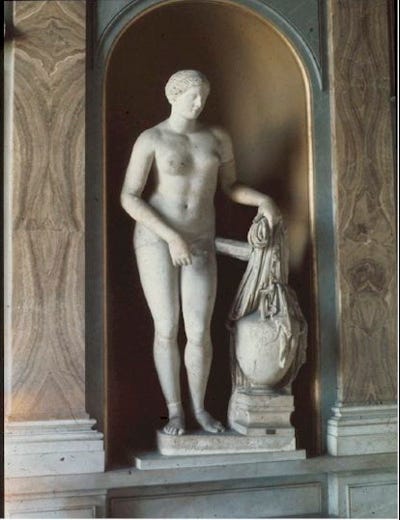

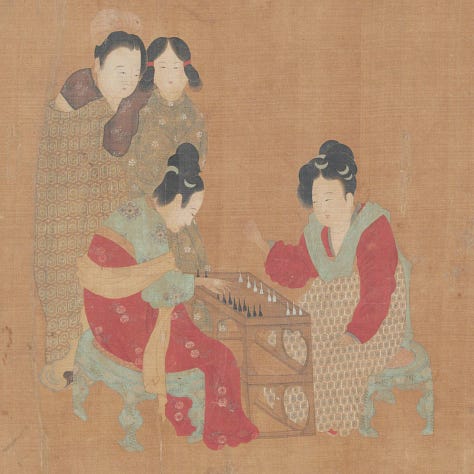
Ancient Greece: symmetry, soft yet athletic bodies, youthful, slender, and pale
Ancient Egypt: symmetry, slender frames with narrow hips and shoulders, high waistlines; beauty tied to cleanliness and fertility; dramatic eye makeup
Ancient China: standards varied by dynasty—some eras praised fuller figures, others idealized petite frames; foot binding emerged as a symbol of elite femininity
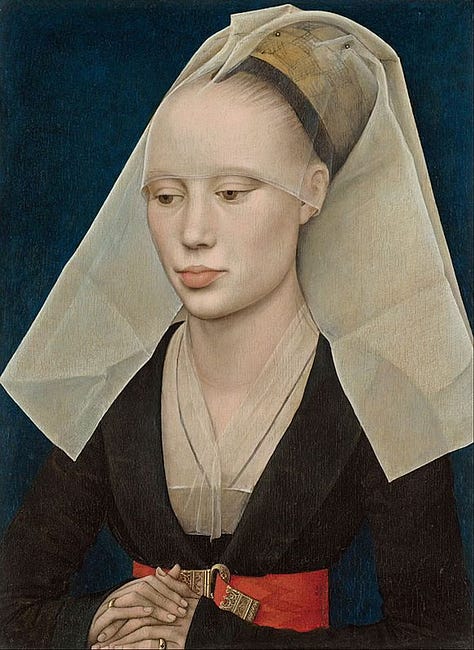
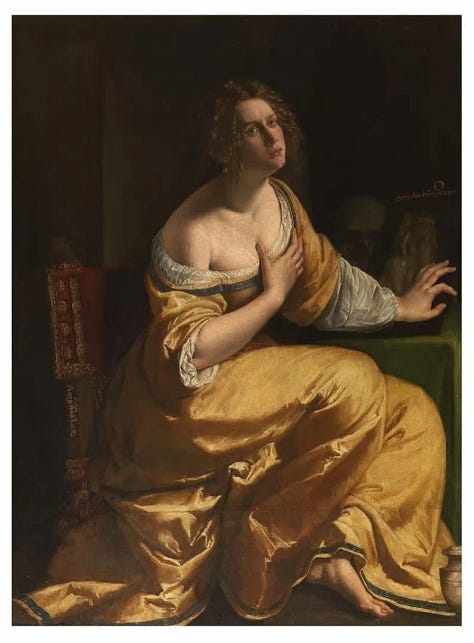
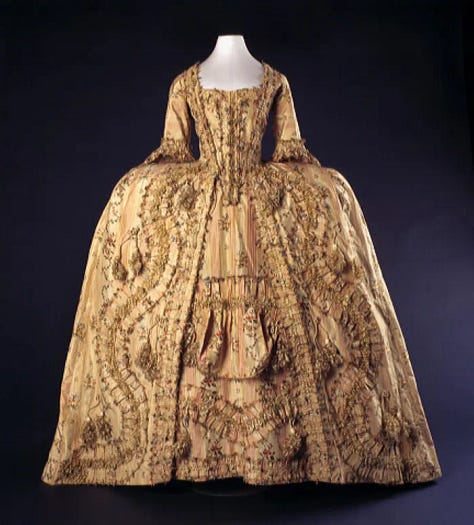
Medieval Era (Europe): pale skin, high foreheads, golden hair; beauty linked to chastity and religious virtue
Renaissance (Europe): full figures, soft stomachs, pale skin, flushed cheeks, and the rise of the hourglass ideal
1700 - 1850 (U.S.): pale, powdered skin; the corset enters mainstream fashion; small waists and elaborate wigs dominate aristocratic beauty
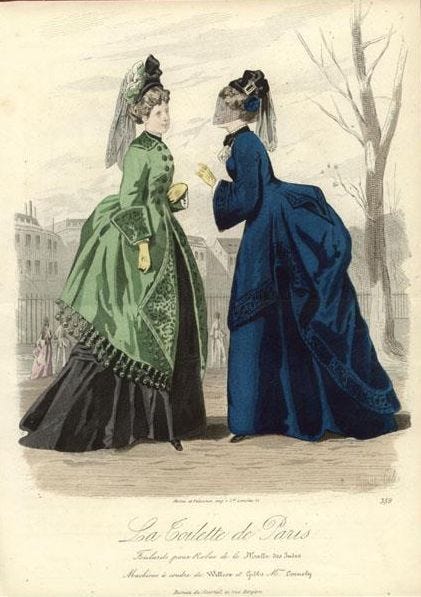
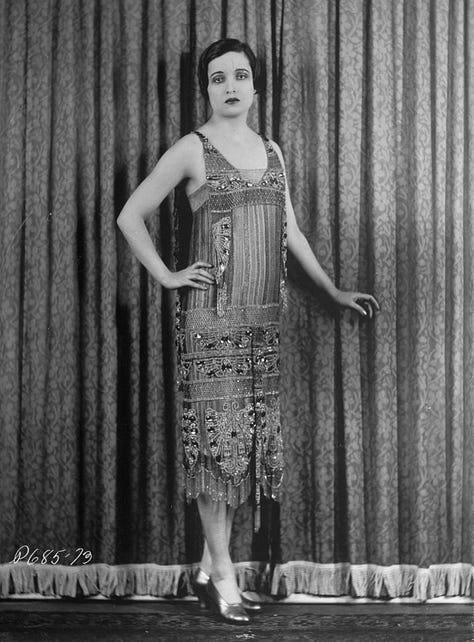
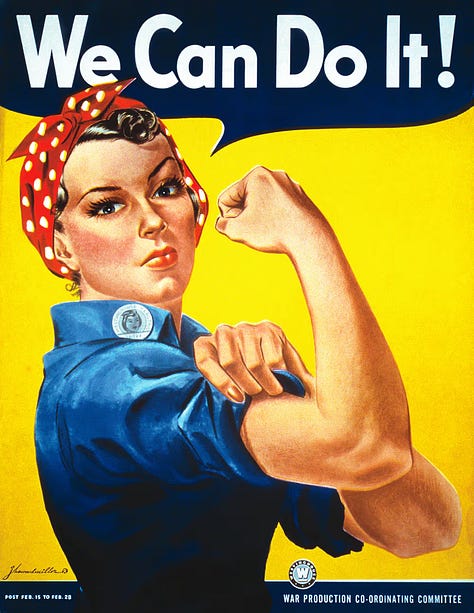
(from L to R) La Toilette de Paris Fashion Plate 1871; Actress Alice Joyce photograph from Bain News Service 1926; Rosie the Riveter 1850 - Early 20th Century (U.S.): extreme hourglass emphasized through tight corsets; wide hips and full busts linked to fertility—paired with an intense push for modesty (the irony)
1910s - 1920s (U.S.): a shift from soft curves to a more androgynous look; flat chests, narrow hips, tanned skin, and bold makeup define the flapper era
1940s (U.S.): practical glam; strength and health are idealized
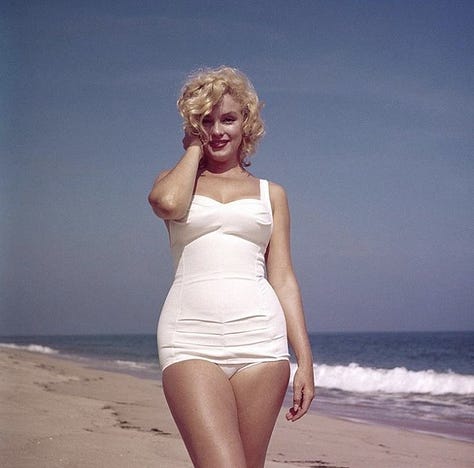
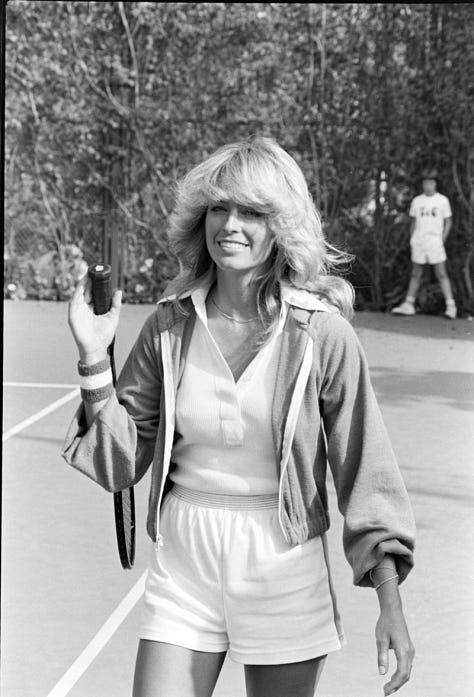
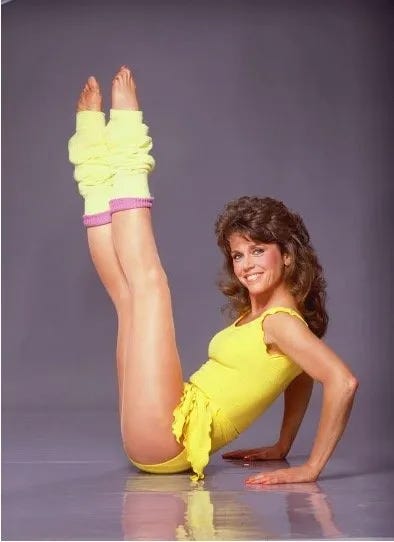
(from L to R) Marilyn Monroe at the beach in Amagansett; Farrah Fawcett 1976; Jane Fonda 1985
1950s (U.S.): curvy hourglass returns, with a hyperfeminine, domestic aesthetic celebrated
1960s & 1970s (U.S.): lean, slender bodies; natural makeup and an earthier, more “authentic” beauty approach
1980s (U.S.): athletic chic and the aerobics aesthetic dominate; toned bodies and visible strength emphasized
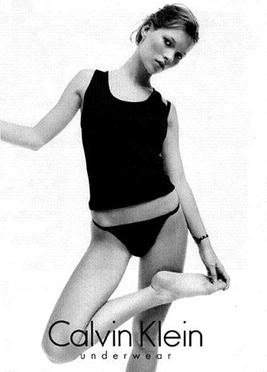
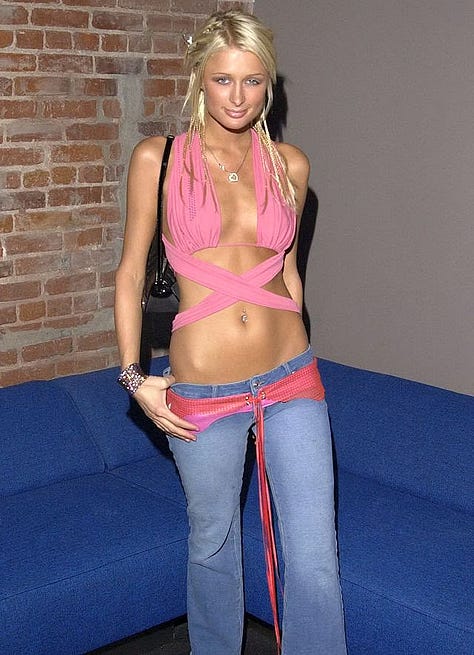
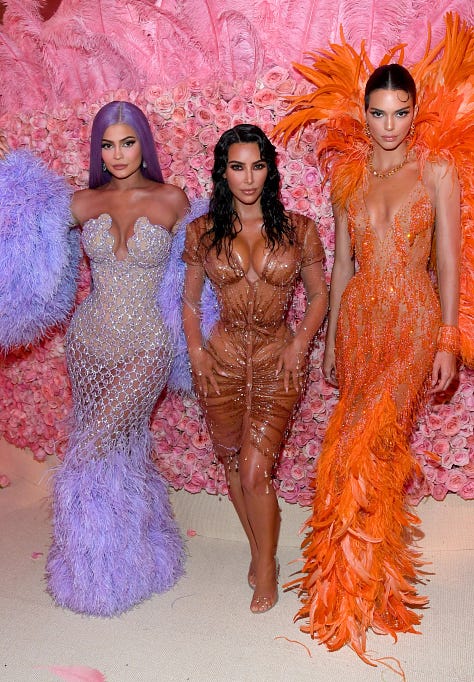
(from L to R) Kate Moss 90s Calvin Klein; Paris Hilton early 2000s; Kardashians and Jenners 2019 Met Gala
1990s (U.S.): heroin chic, grunge, and fragility take over—extreme thinness becomes the standard
Early 2000s (U.S.): ultra-thin bodies, flat stomachs, board-straight hair, low-rise jeans, and deep tans rule the era
2010s (U.S.): the “slim-thick” ideal emerges—tiny waist, flat stomach, and curvy hips, often surgically enhanced or digitally filtered
2020s (U.S. Present): a constant revolving door—body positivity and body modification exist side by side, with inclusivity gaining ground while thinness has resurfaced under new guises
It’s no wonder women have struggled for (literally) thousands of years to reach some absurd beauty standard primarily dictated and measured by the male gaze.
It’s the same cycle. Over and over and over again. You’d think that as a society we’d come up with some more interesting or creative beauty expectations, but the same shifting patterns keep showing up as the years go on.
Why is it that we are allowing a constantly changing standard define how we see ourselves? Culture clearly cannot make up its mind, so why do we allow ourselves to become trapped in this revolving door of damaging “ideals” and disappointment? The root of the problem isn’t just cultural. It’s spiritual.
In a word (or two): our flesh.
Our flesh tells us that our identity is found in something external that we can achieve. But in a world of shifting expectations, God’s standards are consistent. And Scripture tells us that our identity is found in what God has already done for us eternally in our hearts and souls.
Leaning into Tools, Not Rules
Conversations like this aren’t going to change the ways of the fashion industry. I’m not anticipating this blog post to be a whole lot more than a drop of sand in an ocean of voices in the conversation. I don’t anticipate that you (or I) will walk into a dressing room tomorrow with a magically changed perspective—unbothered the next time you have to get something specially tailored (yet again). But what I do hope is that you might feel less alone in this struggle and have some tools in your back pocket (pun intended) that help you learn to feel joy again as you dress yourself.
Don’t Fear the Tailor: It’s inconvenient. It can get expensive. But it’s not a failure or a poor reflection of you. Many times, custom outfits can be made that fit better and are less expensive than altering something off the rack. Ask around and don’t be afraid to think outside the box for your one-of-a-kind shape.
Focus on Fit Over Size: We already discussed that sizing is inconsistent, so stop focusing on the tags and focus on the fit. How do you feel? Remember that finding outfits is about finding clothing that fits you, not the other way around.
Learn Your Curvy Proportions: This is such a power move. When you know your proportions, you can learn how to bring focus to the best parts of your curves and how to de-emphasize areas you prefer not to highlight.
Seek Out Curve-Friendly Brands: More and more brands are learning how to make clothes that truly fit and flatter curvier bodies—and it’s a breath of fresh air. Labels like Madewell, Good American, ASOS, Abercrombie & Fitch (the Curve Love line), Universal Standard, Judy Blue Jeans, and Spanx Apparel have strong reputations for designing with curves in mind, not just scaling up standard sizes.
Don’t Look at Your Body as a “Before and After Project”: I’ve been this woman. The woman who constantly posted the before and afters. And then when I couldn’t maintain the workouts and the caloric deficit any longer, I felt like I had failed. Your body is a not a “before and after project.” It’s something that deserves love and admiration for serving you daily.
Show Up in Photos: Stop waiting to fit some unrealistic ideal before you capture memories for yourself. You deserve to be seen and your future self deserves to be able to look back on these memories.
Wear What Brings You Joy: Life is too short to spend it wearing things that don’t make you feel beautiful.
Stop Apologizing for Taking Up Space: Be yourself. Stop apologizing for being a curvy, beautiful woman. Stop feeling like you need to explain yourself for existing or for the way you look.
(Most Importantly) Remember: Your Clothes are the Least Interesting Thing about You: Your clothes can help you express yourself, but they don’t define you. The numbers on the tags don’t determine your worth. Embrace your style and your shape, but don’t ever forget that you are so much more than your body size or the clothes you wear.
We can’t control how the fashion industry or our culture choose to define the beauty standard. We can only control our thoughts and the things we believe about ourselves. We can control how we respond and how we choose to show up for ourselves in spite of the unrealistic expectations of the world. We can choose to believe that God’s view of us as a beautiful creation is everlasting, and seek His approval above all others.
You’re not crazy. You’re not too much. You’re not the wrong shape. And you are certainly not alone.






Thank you for this!
We are almost the exact same measurements...but I do not see myself as I see you if that makes sense....my confidence lacks tremendously; I just want to get where I am comfortable in my own skin. Comparison is a thief for sure.